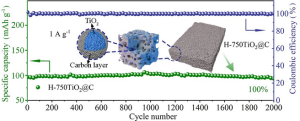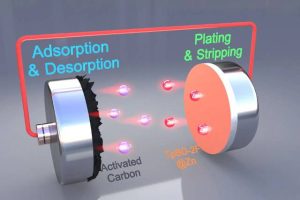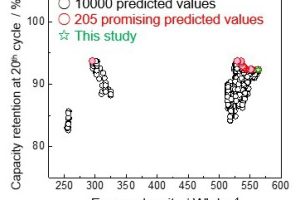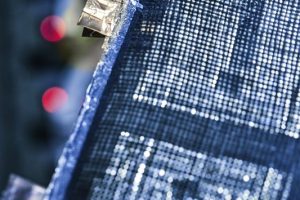
As a possible sodium-ion anode for such batteries, materials scientists at Qingdao University have used titanium dioxide and graphite to produce a stable structure, unchanged after 2,000 cycles.
“The researchers found that the battery exhibited a reversible specific capacity of 228mAh/g at a current density of 0.05A/g, with 100% capacity retention after 2000 cycles at 1A/g,” according to the university. “A full coin cell assembled with Na3V2(PO4)3 as the cathode delivered an energy density of 220Wh/kg.”
As a raw material, the team picked a form of TiO2 known as ‘anatase’, whose crystalline structure is porous to Na+ ions due to the presence of two-dimensional channels.
However, according to Qingdao professor Xiu Song Zhao, anatase has poor electron conductivity, and the ion diffusion rate could be better.
The answer, common to most of battery electrode construction, is to increase the relative surface area of the material by using microscopic particles, held robustly in a highly porous conductive matrix.
Zhao’s approach to this end was to exploit sol-gel chemistry to synthesise spongy, thermally-stable anatase covered with carbon.
Thermal stability is important here, as temperature is something that can change the crystal structure of anatase into other forms of TiO2 less able to store sodium ions. The Qingdao team said that its anode material is stable up to 750°C.
“This work prepared anatase with a special structure to improve the electron conductivity and ion diffusion kinetics,” Zhao said. It “provides a method for synthesising high performance titanium dioxide-based anode materials and ideas for studying the storage mechanism of the anatase.”
The work is described in ‘Sodium-Ion Storage Properties of Thermally Stable Anatase’, published in Energy Material Advances.
 Electronics Weekly
Electronics Weekly



